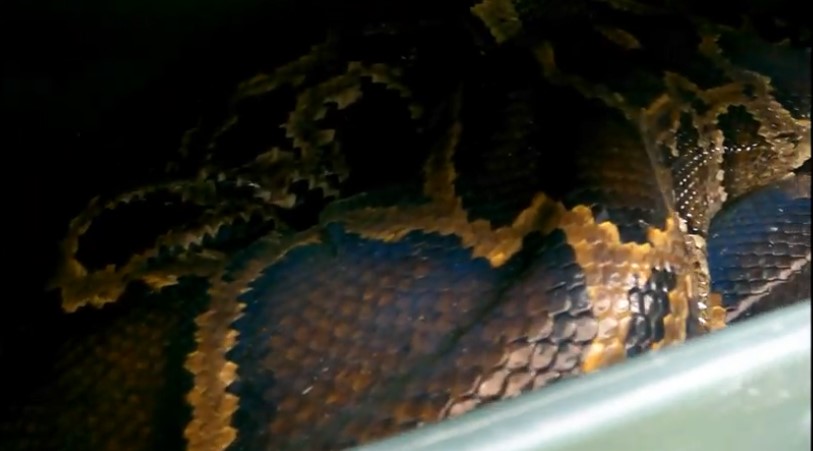
There are many species that can become a massive problem when they are introduced to a territory where there were no similar animals previously, and this is certainly the case with the Burmese Python (Python Molurus Bivittatus). This is particularly a problem because the Burmese Python is one of the largest and heaviest snakes in the world, and the Florida Everglades are a very good environment for these Pythons. The growth of this population is believed to have originated from snakes that were originally kept as exotic pets and either escaped or were released into the wild, where they found a very good habitat.
Appearance And Diet
In their native south east Asia the Burmese Python can grow up to 23 feet in length and can weigh nearly 200 pounds, but the biggest example found in Florida so far was only 16 feet in length weighing 152 pounds. The Burmese Pythons are quite distinctive from the native species of snakes in Florida because of their significantly large size, but also because of the coloring of the snake, which is generally light green with dark brown blotches running along the body.
In terms of the diet of the Burmese Python, it is a constrictor so will kill the animal before eating it, and can eat a wide range of small and medium sized mammals, along with amphibians, fish and birds. The presence of a booming population of Burmese Pythons has been blamed for a significant reduction in the populations of small and medium sized mammals in the area, with opossums, raccoons and bobcat populations having been decimated in the area.
Behavior And Habitat
One of the reasons that Burmese Pythons do make for popular pets is that they can be quite docile and calm when they experience human contact, but it is best to leave it well alone if you find one in the wild. Because these animals can grow very large, and will eat almost any animals, it is best to avoid them unless you are a professional trapper. These pythons can bite if they perceive you as prey, and as constrictors they will then try and wrap their coils around the individual. Although they are generally nocturnal, they can be active throughout the day.
In terms of the Burmese Pythons in Florida, they are generally ground dwelling snakes, but younger snakes are also known to climb trees. They are also very good swimmers, and can travel long distances in waterways, which has led them to becoming quite widespread throughout the South Florida area. They are most prevalent in the moister and more humid areas of South Florida, but have been sighted across the majority of the state in areas closer to water.
Reproduction And Growth Cycle
One of the reasons that the Burmese Python has become a problem so quickly is that it reproduces very quickly, and the young can grow very quickly too. The extensive mating season runs between December and April, and just one female can actually lay up to 100 eggs in one clutch, but will average 35 eggs between May and June. The female snake will then coil herself around the eggs until they hatch in July and August.
When they hatch these juvenile snakes will usually be between a foot and a half and three feet in length, and with abundant food they can grow very quickly. They can grow up to six feet in length in the first year, and will usually reach sexual maturity in their second year.
Population In Florida
The Burmese Python has become an invasive species in Florida which is threatening many endangered species in the area, and there have been measures taken. The import of Burmese Pythons has been outlawed, and the staff of national parks do carry out trapping and euthanizing programs, with population estimates ranging from 5,000 to 180,000 Burmese Pythons in Florida.
Go back to the pestcontrolsnake.com home page.
Copyright 2021 - pestcontrolsnake.com
Nationwide Snake Control